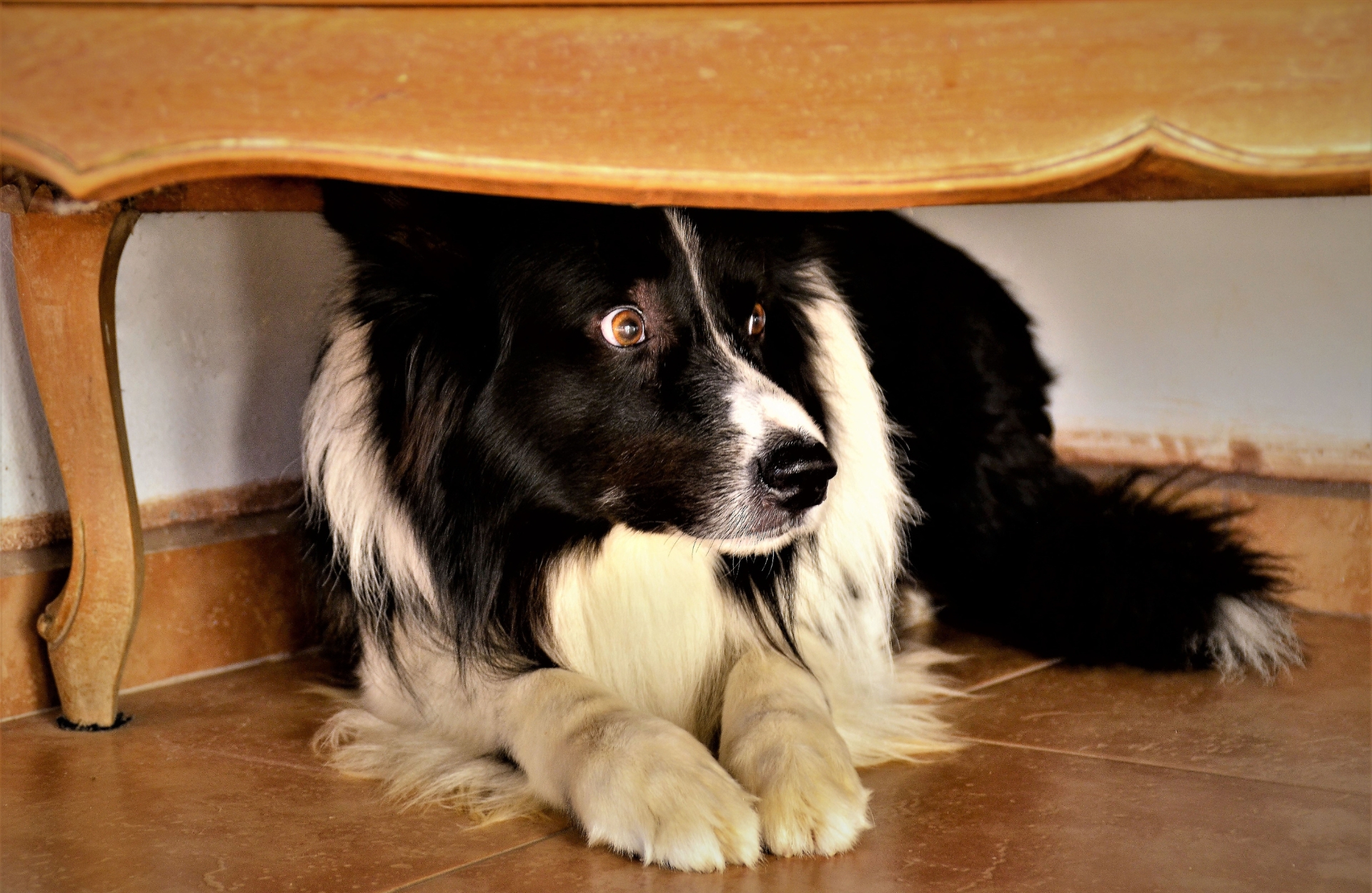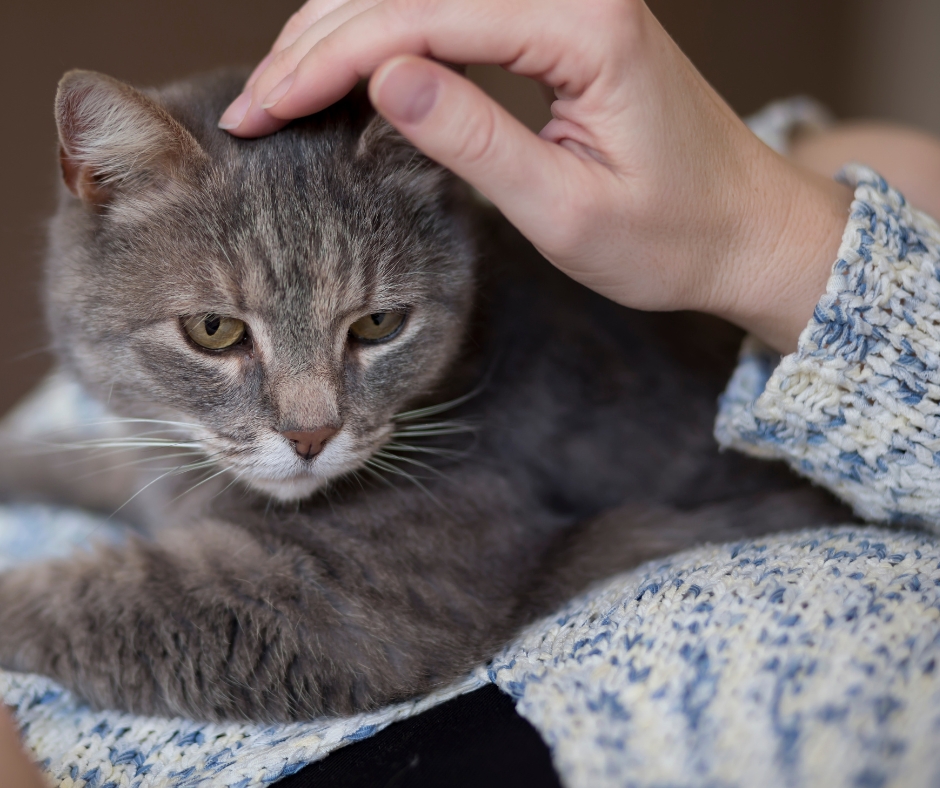Spring is on its way, and with it, storm season arrives. While it ushers in the changing of the seasons, it can leave terrified pets in its wake. Storm anxiety is a common affliction in the veterinary field. Texas is on the edge of tornado alley, and we often have impressive thunderstorms. Before the first claps of thunder, even the most relaxed pets can become clingy to their pet owners, get anxious, and begin pacing, panting, or hiding. Barometric pressure increases, winds pick up, low rumbles of thunder in the distance, and lightning flashes are all common triggers that can create a fear response in many pets. No matter where you live, the tips below may help your frightened canine or feline find comfort through the weather. Every pet is different and may do well with one, or even a combination of different coping strategies from the list below. 
Go for a walk
Exercise is a productive way to burn off excessive energy before it turns into anxiety. If you cannot go out for a walk, a good game of fetch, chasing a laser pointer, or another active game your pet enjoys are excellent alternatives. After all that movement, your pet may be tired and choose to nap through the downpour.
If you intend to leave for a walk, plan ahead in the event the storm arrives sooner than expected. Ensure you have a well-fitting collar and use a sturdy leash that can withstand pulling. Double check that their collar has current tags with updated contact information. No one wants their pet to get lost, especially when the weather is bad. If you have not already done so, getting your pet microchipped is an excellent safety net if their tags fall off while they are lost. Our office could do this during your next exam.
Make some noise
No matter if there is a loud storm or fireworks outside, this method is often helpful for many pets when the outside world gets too exciting. Turning on the radio with soothing music or watching a TV show can help create white noise. White noise can minimize the startling noise of a thunderstorm outside. The volume on the device you plan to use will need to be just loud enough to muffle the commotion outside. Remember to pick something that does not have loud banging or startling sounds. If you do, this may not have the calming effect you intended. Additionally, you can leave the light on in the area where your pet is staying. This may help hide the flashes of lightning until the storm passes out of range.
Creature Comforts
You already know that your pet feels most comfortable when it's close to you. Allowing your pet to stay by your side can help settle their nerves. Give them a spot on the floor (or couch, depending on their freedoms in your home) that is close by. Offer treats and affection as a distraction and to reward their more calm, focused behavior. How you respond to the storm itself will be detected by your pet. If you are calm and relaxed, they will notice that the weather might not be as scary.
your pet feels most comfortable when it's close to you. Allowing your pet to stay by your side can help settle their nerves. Give them a spot on the floor (or couch, depending on their freedoms in your home) that is close by. Offer treats and affection as a distraction and to reward their more calm, focused behavior. How you respond to the storm itself will be detected by your pet. If you are calm and relaxed, they will notice that the weather might not be as scary.
Depending on when the inclement weather is due to arrive, you might not be able to stay with your pet. If you cannot stay home, keep them inside. Provide them with a safe space (such as their kennel or a bedroom) to rest quietly in. Give them a safe toy to play with and a familiar blanket to cuddle with. If you choose a bedroom, make sure the curtains are closed to help muffle the thunder and block out the flashes of light. Combining a "white noise" effect in this situation may be beneficial. Adding a fan or leaving the TV or music playing could help drown out the rumbles of thunder.
Chat with your Veterinarian
If the above strategies are unsuccessful, you may need further support. Consult your veterinarian on additional ways that you can help your terrified pet feel more at ease. Your vet may suggest a medical device, such as a snug wrap, to help provide a feeling of security. They could also recommend taking prescription-strength anxiety medication prior to stormy weather or an event that creates anxiety. The doctor might recommend a trial run of this medication to see if this dose will provide the desired results. If you feel your pet needs this level of intervention, it is best to schedule an exam before the coming storm season or other events that could create anxiety. Give our office a call, and we will be happy to schedule a consultation.
